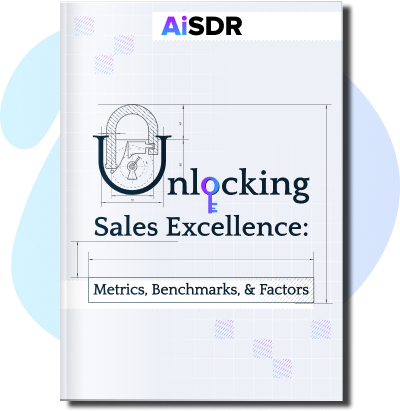Best AI Tools for Primary and Secondary Market Research

Check out the difference between primary and secondary market research, as well as the tools you can use for them
Know your customer.
This line is prominently featured in practically every post or article about marketing lifehacks and recommendations (sometimes glossing over the fact that some reading between the lines is necessary).
Still, you should know who your customers are and what they want. Only when you do will you be capable of making them an offer they can’t resist.
But how can you get to know your customer? What if you’re still preparing your first product for launch and you don’t have any actual customers yet?
Those are the questions that market research tries to answer.
In this post, we’ll try to cover questions like:
- What is primary market research?
- What’s the difference between primary and secondary market research?
- When do you need each one?
- What’s the best way to conduct market research?
We’ll answer these and more, including some of the best market research tools.
Primary market research: From the horse’s mouth
The legendary Henry Ford once said, “If I had asked people what they wanted, they would have said faster horses.”
For us lesser mortals, it makes perfect sense to ask people what they want before offering them something new to try. This is the goal of primary market research.
In its most basic form, primary market research is as simple as that: asking your actual or potential customers what products they like, what features matter most to them, and how much they’re willing to pay for a product like yours.
There are, however, more sophisticated forms, such as observation or experimentation.
Primary market research is defined as collecting data by engaging people directly. You may want to do it when:
- Entering a new market or launching a new product to gauge a potential customer’s interest and predict possible revenue
- Planning a major change to your product or sales strategy to identify customer needs and preferences so you can use this knowledge to achieve a better market fit
- Evaluating customer satisfaction as an ongoing process to improve your offerings and stay on top of your competition
Primary market research has a range of benefits:
- Customization – You can tailor its design to your specific needs and get straightforward answers to your questions, which is critical for many email frameworks
- Relevance – The collected data will be up-to-date, relevant, and specific to your market segment, product, or service
- Exclusive insights – You might discover something no one else has yet, allowing you to get a head start on creating an innovative product
- Control – You have complete control over the research process
- Flexibility – Methods and questions can be adjusted on the go to tap into emerging issues
You may also want to consider using one of the common primary market research methods, such as a survey or interview.
Primary market research methods
There’s a plethora of primary market research methods to choose the best match for your needs.
Group surveys
Perhaps the most well-known primary research method, group surveys require approaching a large group of potential or actual customers with a set of questions in person, via email, or some other medium. You can ask, for example, what features they are looking for or how much they’d want a product like yours.
However, one drawback of running group surveys at scale is the lack of personalization. Many recipients may simply ignore the survey since they don’t see the value or the messaging isn’t sufficiently compelling.
Interviews
If you want more in-depth insights, you can go for one-to-one interviews with your current customers, asking them in detail about their experiences and customer journey with your product. This way, you can gain detailed feedback and learn about less obvious reasons behind customer satisfaction or discontent.
Observation
Sometimes, it is best not to ask any questions but simply to observe what people are doing, e.g., what pages of your website they spend most time on or which links they’re most likely to click on. That’s another good way to understand what attracts your customers.
Experiment
In an experiment, you offer customers a choice of two or more options and take note of which one most people prefer. A/B testing is perhaps the best-known type of marketing experiment.
Focus groups
Focus groups are most useful when getting ready for a new product launch. This is how it works: You gather a small group of target customers, present them with the product, and let them discuss what they like and don’t like. These insights can be used to improve the offering.
In our digital era, you can run any type of research online using dedicated market research software.
Best primary market research tools
These cutting-edge tools, including AI-powered ones, will simplify primary market research.
SurveyMonkey
SurveyMonkey offers an intuitive way to set up customer surveys and distribute them among your existing base.
Qualaroo
Integrate Qualaroo with your website to gather real-time feedback. For example, you can design a form asking users how they liked their experience or if they faced any issues.
Ahrefs
Ahrefs is perfect for a large-scale observation of your target audience’s behavior on the web: which keywords they google most often and what links they click on.
AI Persona Builder
You can input the data you collected from surveys, interviews, and observations into AI Persona Builder to generate a buyer persona to help you create targeted content.
AiSDR
AiSDR is a versatile tool that allows you to use generative AI in interviewing hundreds of customers via email. What’s more, you can feed your qualification criteria to AiSDR and learn which customers match your expected audience.
Now you know where to look for help with your primary research. But what about secondary research?
Secondary market research: Don’t reinvent the wheel
You’re not the only one wondering what your customers want. All your competitors are probably asking the same questions right now.
The larger and more established your market is, the higher the chance that someone has already collected the information you seek. You just have to look around and check the right places. This process is known as secondary market research.
When doing secondary market research, you read market reports, articles, and studies done by others rather than engage your customers directly. That’s an amazing way to save time and money in the following situations:
- Researching a market you have no past experience with
- Benchmarking your performance against competitors
- Identifying macroeconomic or industry-wide trends that could affect your future sales or provide new opportunities
You may want to consider secondary market research as a viable alternative to primary research given its many advantages:
- Cost-effectiveness – Secondary research in marketing is generally less expensive as others have already collected the data.
- Time-saving – You can obtain market insights much faster by doing secondary research.
- Broad perspective – High-quality sources offer a big-picture view of the market, industry trends, and historical data.
- Availability – Some types of useful resources, such as government publications, can be accessed at no cost at all, and most of them are easy to find online.
- Providing a good starting point – Even if you’ve decided to go for primary research, you may want to use secondary research as a starting point to better focus your effort. Browsing the existing market knowledge, you can identify its gaps and design your own study to fill them.
Just as with primary research, there are multiple types of secondary market research as well. The most common involve research databases, government publications, and competitor data.
Secondary market research methods
Secondary market research sources are abundant on the web, but it’s too easy to get lost in this abundance of data. You will need to follow a particular methodology to make sense of it.
Using research databases
Statista, IBISWorld, or other databases can help you gauge your target market size, trends, and key players.
Analyzing government publications
This method is especially handy for understanding your target market’s regulatory framework, tax policies, and business incentives.
Competitor analysis
When entering a crowded market, you will certainly want to know what your strongest competitors are doing. You can achieve that by analyzing their websites, social media accounts, and customer reviews on third-party websites, as well as their search engine rankings, keyword strategies, and backlink profiles.
You don’t have to manually collect all the competitor and market data. There’s a bunch of special tools to speed up this process.
Best secondary market research tools
Secondary market research tools make it easy to access and analyze the market data collected over the years.
SurveySparrow
SurveySparrow lets you analyze the aggregated data from multiple customer surveys in your industry. For example, you can see how people’s preferences have changed over time.
SEMRush Market Explorer
SEMRush Market Explorer provides comprehensive insights into how your major competitors obtain their traffic, in particular, what keywords they use.
Ahrefs
Similarly to SEMRush, Ahrefs can help you find out what content and which keywords work best for your competitors to plan your own content strategy accordingly.
Statista
Statista offers a wealth of statistics and reports on various industries, markets, and countries, providing reliable data on market size, trends, consumer behavior, and industry forecasts.
Tableau
Having trouble making sense of all those figures? Tableau is made for you. This data visualization tool can transform data collected from multiple sources, like Statista and SEMRush, into interactive, understandable visuals.
Blending these and other tools according to your needs, you can gain a comprehensive picture of your industry and rely on it to make informed strategic decisions.
Bonus: Additional market research tools
Several paid and free market research tools are versatile enough for primary and secondary research. Here are a few examples.
Upwave
Upwave is a dedicated platform for advertising campaign assessment. You can track brand health metrics such as awareness, consideration, and usage over time and compare your brand against the competition.
Make My Persona
Make My Persona by Hubspot is a free template for buyer persona creation. It helps you present the results of your customer research in a clear and actionable way.
GWI
GWI’s extensive database provides detailed insights into online consumer behavior, digital habits, and market trends across demographics and geographies. You can browse past studies or design and run a custom survey on the platform.
Take AI for market research for a spin
With all the market research tools available, only a few leverage the capabilities of AI at the moment. What’s more, most of them are designed for a single purpose and aren’t capable of integrating.
AiSDR’s generative AI helps you correspond with customers and potential clients quickly and easily. In addition to its ability to respond in less than 10 minutes, AiSDR can create a sales persona in minutes to engage 100% of your leads while matching your tone and brand voice.
Book a demo to see the power of generative AI for market research.
FAQ
What is primary market research?
Primary market research is collecting the data you need straight from its source. You ask questions, observe, or survey to get fresh insights into what your customers think or want.
What is secondary market research?
Secondary market research is like being a detective with a library card. You dig through the research done by others—reports, articles, stats—to find clues about your market.
Why is primary market research essential?
It’s like getting the freshest gossip firsthand. You get the scoop straight from the crowd, making sure that what you learn is fully relevant and tailored just to your needs. It’s the real deal to understand what your customers actually think.











